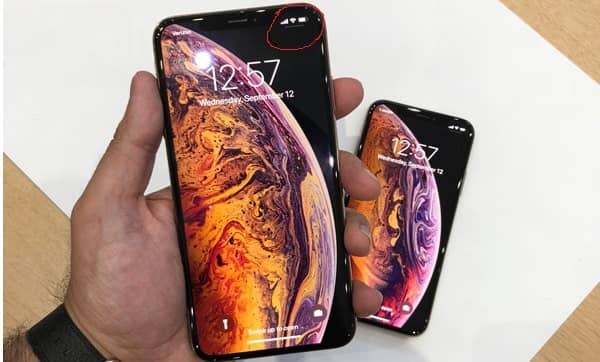
Display technologies are essential for producing colourful graphics and an engaging user experience with electronic gadgets. Two prominent display technologies used in Apple devices are Liquid Retina and Retina.
Understanding the disparities between these technologies is essential for making informed choices when purchasing electronic devices.
When discussing display technologies in electronic devices, particularly in the context of Apple products, the names Liquid Retina and Retina are frequently employed. These display technologies offer distinctive properties and capabilities that meet user preferences and needs.
This article will examine the distinctions between Liquid Retina vs Retina screens and their advantages and potential uses.
Understanding Retina Displays
Definition of Retina display
A display with a high resolution and pixel density that allows the human eye to perceive a smooth and detailed image without being able to distinguish individual pixels is called a ‘retina display.’ Apple popularized this term.
Retina implies that the display has attained a level of clarity on par with or better than what the human Retina is capable of.
Definition of Liquid Retina display
Apple uses the term Liquid Retina display to describe an advanced LCD display technology that offers edge-to-edge screen coverage and enhanced visual quality.
When we talk about the Liquid aspect, we mean that the display can curve at the edges, maximizing the screen real estate and providing a more immersive viewing experience.
Features
Resolution and Pixel Density
Retina display
Retina screens are available depending on the device in a range of resolutions. The resolution of the Retina display on the iPhone 12 Pro Max is 2778 x 1284 pixels, for instance.
This is equivalent to a pixel density of approximately 458 PPI. This many pixels per inch provide clear, detailed images.
Liquid Retina display
Depending on the device, liquid retina displays have different resolutions. Consider the Liquid Retina display on the 12.9-inch iPad Pro, which has a 2732 x 2048 pixels resolution and an approximate pixel density of 264 PPI.
Its pixel-density screens still provide exceptional clarity despite being slightly lower than Retina.
Color Accuracy and Gamut
Retina display
Retina displays are renowned for their precise colour reproduction, showing colours that nearly mimic the ones found in real life.
They often ensure rich and lifelike images for various materials, including photographs, movies, and graphics. They frequently span a wide colour gamut, such as the P3 colour space.
Liquid Retina display
Liquid Retina displays maintain the same high color accuracy found in Retina displays. Rich and brilliant colours are possible thanks to their wide colour gamut support.
Additionally, the Liquid Retina displays’ True Tone display technology adjusts the colour temperature based on the ambient lighting environment to provide a more realistic viewing experience.
Contrast Ratio and Brightness
Retina display
Retina displays typically offer high contrast ratios and brightness levels, ensuring deep blacks, bright whites, and a wide range of greys.
This dynamic range enhances the visual experience, making images and videos appear more vivid and detailed.
Liquid Retina display
Liquid Retina displays strive to achieve similar contrast ratios and brightness levels as Retina displays.
While they may not reach the same levels as more advanced display technologies like OLED, Liquid Retina displays still provide impressive contrast and brightness for most everyday use cases.
Display Technology and Performance
Retina display
Retina displays utilize advanced technologies, including high-resolution LCD panels, pixel masking, and pixel rendering algorithms, to achieve superior visual quality. These technologies work harmoniously to deliver a visually stunning experience.
Liquid Retina display
Liquid Retina displays build upon the foundation of Retina display technology. They incorporate additional features like ProMotion, which enables a 120Hz refresh rate, resulting in smoother and more responsive scrolling, drawing, and gaming experiences.
HDR support enhances the display’s ability to render a wider range of colors and improved contrast.
Applications and Devices
Devices featuring Retina displays
Apple products like the iPad, iPhone, MacBook, and iMac prominently showcase Retina displays. Retina displays built specifically for each device’s size and use allow for the best visual experience regardless of form factor.
Devices featuring Liquid Retina display
Only a few iPad models, like the iPad Pro series, include liquid Retina displays. The edge-to-edge display design on these devices maximizes screen space and offers a fully immersive viewing experience.
User Experience and Preferences
Factors influencing user experience
User experience with display technologies can vary depending on individual preferences and use cases. Some users prioritize vibrant colors and deep blacks, while others value a high refresh rate or color accuracy.
When evaluating display technologies, consideration should be given to factors such as content consumption, productivity, gaming, and artistic endeavors.
User preferences for display technologies
User preferences regarding display technologies may vary. Some users may prefer the visual characteristics of Retina displays, appreciating their high pixel density and color accuracy.
Others may favor Liquid Retina displays for their edge-to-edge design and their additional features, such as ProMotion and HDR support.
Conclusion
In summary, Liquid Retina and Retina displays are impressive display technologies with unique features and benefits. On various Apple devices, Retina displays provide high pixel density, precise colour reproduction, and excellent visual quality.
The user experience is further improved by the ProMotion technology, edge-to-edge coverage, and HDR support offered by liquid retina displays. Choosing between these technologies depends on individual preferences, use cases, and device requirements.
F.A.Q.s
Are Liquid Retina displays only available on Apple devices?
Yes, Liquid Retina displays are exclusive to Apple devices, precisely specific models of iPads.
Which display technology is better for gaming?
Both Retina and Liquid Retina display can provide an excellent gaming experience. However, Liquid Retina displays with ProMotion technology offer a higher refresh rate, resulting in smoother graphics and more responsive gameplay.
Does Liquid Retina displays consume more power than Retina displays?
Liquid Retina displays consume power comparable to Retina displays. The overall power consumption of a device depends on various factors, including display technology, device optimization, and usage patterns.


